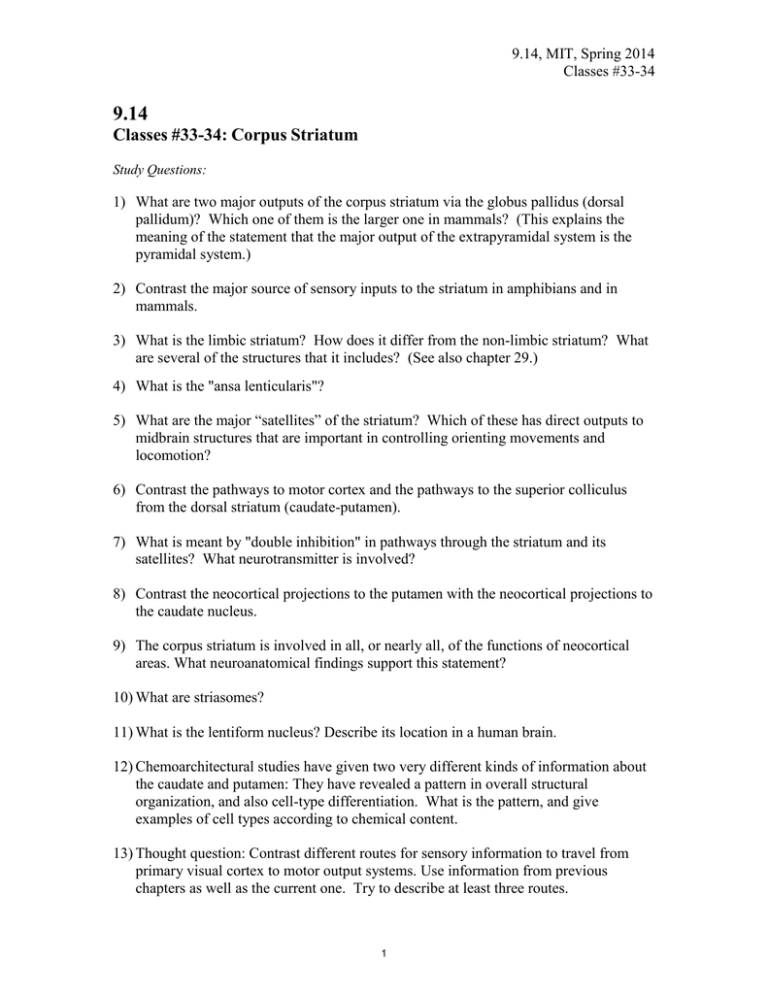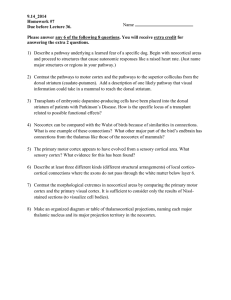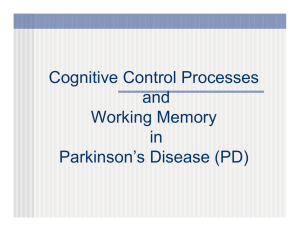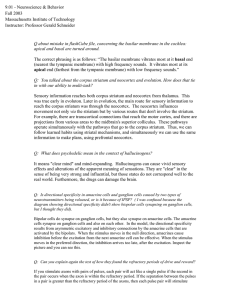9.14 Classes #33-34: Corpus Striatum
advertisement

9.14, MIT, Spring 2014 Classes #33-34 9.14 Classes #33-34: Corpus Striatum Study Questions: 1) What are two major outputs of the corpus striatum via the globus pallidus (dorsal pallidum)? Which one of them is the larger one in mammals? (This explains the meaning of the statement that the major output of the extrapyramidal system is the pyramidal system.) 2) Contrast the major source of sensory inputs to the striatum in amphibians and in mammals. 3) What is the limbic striatum? How does it differ from the non-limbic striatum? What are several of the structures that it includes? (See also chapter 29.) 4) What is the "ansa lenticularis"? 5) What are the major “satellites” of the striatum? Which of these has direct outputs to midbrain structures that are important in controlling orienting movements and locomotion? 6) Contrast the pathways to motor cortex and the pathways to the superior colliculus from the dorsal striatum (caudate-putamen). 7) What is meant by "double inhibition" in pathways through the striatum and its satellites? What neurotransmitter is involved? 8) Contrast the neocortical projections to the putamen with the neocortical projections to the caudate nucleus. 9) The corpus striatum is involved in all, or nearly all, of the functions of neocortical areas. What neuroanatomical findings support this statement? 10) What are striasomes? 11) What is the lentiform nucleus? Describe its location in a human brain. 12) Chemoarchitectural studies have given two very different kinds of information about the caudate and putamen: They have revealed a pattern in overall structural organization, and also cell-type differentiation. What is the pattern, and give examples of cell types according to chemical content. 13) Thought question: Contrast different routes for sensory information to travel from primary visual cortex to motor output systems. Use information from previous chapters as well as the current one. Try to describe at least three routes. 1 9.14, MIT, Spring 2014 Classes #33-34 Questions on Olanow et al., and on Kempermann and Gage, and on Schneider chapter 31: 1. Why might the topographic organization of connections not be a critical factor in the functioning of nigrostriatal connections from transplanted tissue? 2. Describe the critical nature of donor age in transplant procedures, and why this might be expected. 3. How can imaging of the living brain be used to assess transplant success? 4. How has neuroanatomical assessment been done using tissue obtained at autopsy? Describe a result. 5. What problem does the size of the human corpus striatum pose for transplant procedures? How far can axons grow from the transplants? 6. How is locus of a transplant within the striatum related to possible functional effects? 2 9.14, MIT, Spring 2014 Classes #33-34 7. Why might the functional improvements after transplants have such a slow onset and slow progression? 8. What are alternatives, now or in the future, to transplants of tissue from human fetal substantia nigra? 9. Where has neurogenesis in the adult mammalian brain been discovered most certainly in research since the 1960s? What types of neurons are involved? 3 MIT OpenCourseWare http://ocw.mit.edu 9.14 Brain Structure and Its Origins Spring 2014 For information about citing these materials or our Terms of Use, visit: http://ocw.mit.edu/terms.





